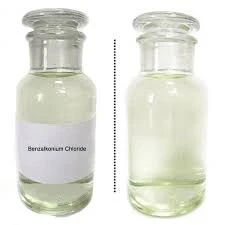polyacrylamide water treatment
The Role of Polyacrylamide in Water Treatment
Water treatment has become an increasingly critical aspect of environmental management, given the growing demand for clean water and the rising levels of pollution. Among various chemicals used in water treatment processes, polyacrylamide (PAM) has emerged as a widely utilized polymer due to its effectiveness in various applications, including coagulation, flocculation, and sedimentation.
What is Polyacrylamide?
Polyacrylamide is a synthetic polymer formed from polymerizing acrylamide monomers. It exists in different forms, including anionic, cationic, and nonionic, each variant tailored for specific applications. When dissolved in water, PAM forms a viscous solution that can effectively interact with various particles found in water, making it an ideal candidate for numerous water treatment processes.
Mechanism of Action
The primary function of polyacrylamide in water treatment lies in its ability to promote flocculation and coagulation processes. When PAM is added to water containing suspended particles, it adheres to these particles through charge neutralization, bridging, and adsorption mechanisms. As the polymer chains entangle and form connections with the particles, they create larger aggregates or 'flocs.' These flocs are heavy enough to overcome the forces of gravity, enabling them to settle down more rapidly or be removed through filtration.
Applications in Water Treatment
Polyacrylamide is employed in various water treatment processes, primarily in
1. Municipal Water Treatment PAM is used in drinking water treatment facilities to improve the removal of suspended solids, bacteria, and other contaminants. Its effectiveness enhances the overall quality of drinking water.
polyacrylamide water treatment

2. Industrial Wastewater Treatment Industries that generate large volumes of wastewater, such as food processing, textiles, and chemicals, utilize PAM to clarify their wastewater. The polymer helps in removing oils, fats, and solid particles, facilitating compliance with environmental regulations.
3. Sludge Dewatering PAM plays a crucial role in the dewatering of sludge generated during wastewater treatment. By promoting the aggregation of fine particles, PAM improves the efficiency of dewatering processes, reducing the volume of waste that requires disposal.
4. Mining and Mineral Processing In mining operations, polyacrylamide is used to enhance the separation of minerals from ore by improving the coagulation and settling of colloidal particles.
Environmental Considerations
Despite its extensive applications and benefits, the use of polyacrylamide raises environmental concerns. One primary issue is the potential toxicity of unpolymerized acrylamide, which is a known neurotoxin and potential carcinogen. To mitigate risks, water treatment facilities must ensure that any PAM used is fully polymerized, preventing the release of residual acrylamide into the treated water.
Furthermore, the biodegradability of PAM varies based on its molecular weight and structure; thus, the environmental impact can differ. Researchers are continually striving to develop more eco-friendly alternatives or modified PAM formulations that reduce environmental toxicity while retaining efficacy.
Conclusion
Polyacrylamide stands out as a crucial agent in modern water treatment practices, offering significant advantages in improving water quality and facilitating the removal of contaminants. Its ability to enhance coagulation and flocculation processes has made it an indispensable tool across various sectors, from municipal water treatment to industrial applications. However, the environmental implications of its use necessitate careful management and ongoing research to ensure that its benefits do not come at the expense of ecosystem health. As regulations and technology continue to evolve, polyacrylamide remains a focal point for innovation within the water treatment industry, paving the way for cleaner, safer water resources for the future.
-
Dodecyldimethylbenzylammonium Chloride: High-Purity DisinfectantNewsAug.30,2025
-
2-Phosphonobutane-1,2,4-Tricarboxylic Acid: Scale & CorrosionNewsAug.29,2025
-
Premium Isothiazolinones | Broad-Spectrum Biocidal SolutionsNewsAug.28,2025
-
LK-319 Special Scale And Corrosion Inhibitor For Steel Plants: Advanced Solutions for Industrial Water SystemsNewsAug.22,2025
-
Flocculant Water Treatment: Essential Chemical Solutions for Purification ProcessesNewsAug.22,2025
-
Isothiazolinones: Versatile Microbial Control Agents for Industrial and Consumer ApplicationsNewsAug.22,2025





